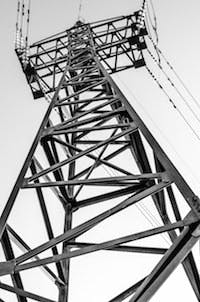A report into Low Energy Wastewater Treatment, compiled by BlueTech Research, revealed that in the U.S. municipal wastewater treatment plant (WWTP) market, two-thirds of the aeration energy consumption associated with conventional activated sludge (CAS) can be attributed to just 4% of the plants.
The largest WWTPs in the U.S.—those in the 100,000 to 1 million population equivalent (PE) range—comprise just 4% of the total number of plants, but account for a large proportion of the aeration energy cost—approximately 66%. This equates to approximately $946 million in annual electricity costs.
The smaller WWTPs—those in the 100 to 100,000 PE range—make up the vast majority of works, but account for a much smaller proportion of the aeration energy consumption. They represent 96%, by number, of the total 16,000 plants, however the associated estimated electricity aeration costs is approximately $482 million.
BlueTech’s report highlights the potential for growth in the low energy treatment technologies market worldwide.
“These larger facilities represent a significant market opportunity for low energy technology implementation,” said Paul O’Callaghan, managing director of BlueTech Research. “They can also potentially capture the most energy in municipal wastewater in the US for reuse.”
The report reveals that there is no "silver bullet" technology available to provide a low energy alternative to CAS at the larger WWTPs, at least in the next five to 10 years. One innovative technology that shows promise in terms of offering a complete low energy alternative to CAS for effective biological treatment of municipal wastewater, is the staged anaerobic fluidized bed membrane bioreactor. This technology is currently at the pilot study stage and is unlikely to be commercially available in the next five to 10 years.
Enhanced primary treatment is a viable solution and offers a retrofit opportunity at the larger plants. While advanced primary treatment is not a replacement for activated sludge, it can reduce the energy consumption associated with biological treatment by diverting organics and increasing onsite energy generation.
However in most technology examples there is an associated additional cost when compared with conventional primary treatment. This can come through the use of polymers and/or coagulants or carbon sources for denitrification or extra energy costs, as in the case of the rotating batch sieves. The report says these costs need to be understood and considered in a whole life-cycle cost and plant energy analysis, prior to the implementation of new technologies.
Low energy passive aeration technologies are not currently a viable option for larger scale facilities, however they can cut costs and energy consumption at smaller capacity plants. Approximately 75% of the smaller plants account for 7% of the aeration costs associated with CAS, a market worth approximately $100 million.
Source: BlueTech Research


